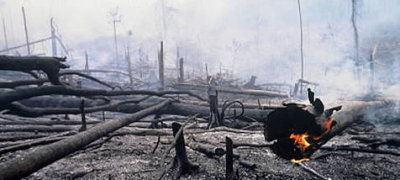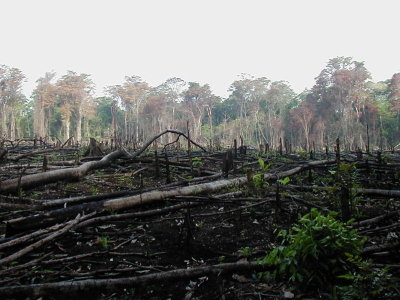Deforestation
Why ?
Tropical forests of all varieties are disappearing rapidly as humans clear the natural landscape to make room for farms and pastures, to harvest timber for construction and fuel, and to build roads and urban areas.
Where ?
Tropical forests span both sides of the Equator, in a warm and usually wet climate, under the Sun's most direct rays. Evergreen forests are located between the Tropic of Cancer (North) and Tropic of Capricorn (South).
How bad is it ?
Generally, the removal or destruction of significant areas of forest cover results in profound consequences including degraded environment, reduced biodiversity, social conflict and climate change challenges. In many countries, massive deforestation is ongoing and is shaping climate and geography.

More facts about tropical deforestation:
- SEOS tutorial on Land use and land use change
- SEOS tutorial on Natural resources management
- http://earthobservatory.nasa.gov/Library/Deforestation/
- http://www.globalforestwatch.org
- page "Agrofuels and the rainforest" of the EOEdu website

What happens in Indonesia ?
Indonesia, for instance, was still densely forested as recently as 1950. Forty percent of the forests existing in 1950 were cleared in the following 50 years.
Millions of hectares of forest are being lost as native forest is cleared to make way for industrial timber plantations for the pulp and paper industries, for conversion to crop plantations like oil palm as well as mining activities.
However, logging and especially illegal logging, is said to be one of the main causes of forest loss.
Burning is the cheapest and rapidest way to clear forest land before it can be turned to crop plantation. Large areas of South Asian forests are being burned each year. This can cause tremendous atmospheric pollution when fires become uncontrollable.
